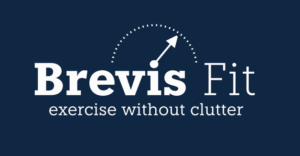Introduction
Do you need help to see the results you want from your exercise routine? It could be because you’re making some common exercise mistakes. You can maximize your workouts and meet your fitness goals faster if you detect and correct them. Read on to learn how to fix the most common exercise mistakes.
Focusing Only on Cardio and Neglecting Strength Training.
One common fitness mistake is focusing only on cardio and ignoring strength training. Cardio activities like running, cycling, or swimming can improve cardiovascular health. They can also help burn calories, but they shouldn’t be the only form of exercise in your routine. The critical issue with such activities is their inability to fatigue one’s muscles properly and safely. Therefore, we refer to such activities as non-exercise activities. And the most troublesome aspect of cardio activities is that they do not provide the primary benefit of Exercise – improved muscle quality [1].
strength training improves muscle quality
Strength training is, in regard to health and longevity, much more critical compared to cardio activities. Strength training focuses on increasing your muscular strength and therefore improves a new dimension of your fitness, that cardio based activities can not. Because stronger muscles are the most important factor of longevity, focusing on strength training should be of primary concern in any health-improving lifestyle routine. Neglecting strength training can lead to imbalances in your body due to uneven muscular strength. For that reason, having strength training in your program is essential.
Best form of Strength training is correct Exercise
The best way to strength train is by doing Exercise, as we have defined it in other posts [2]. In short, Exercise with the capital E, is a form of physical activity that is focused on achieving deep muscular fatigue, safely and time efficiently. It is the most precise and safe way to improve your strength, bone density, and cardiovascular fitness. Incorporating Exercise into your weekly routine will keep your fitness level high for decades, since it relies on achieving deep muscular fatigue in the safest manner possible.

Avoiding muscular fatigue
Since muscles enable movement, they also fatigue the most when we are physically active. And it is this fatigue that signals the body the need to adapt and improve. If the fatigue level is high, the need for positive adaptation is higher, and vice versa. Yet, most trainees avoid muscular fatigue. Clients often says, “This time, the workout was better; I didn’t fatigue as much.”. This is, however, a mistake.
Easy workouts have less benefits
The misconception that an easier workout is a better workout, comes from the idea, that the body adapts to external demands. [2]. However, while your psyche might care about external factors, such as the amount of weight lifted or repetitions completed, your physiology doesn’t. The only language your muscles, bones, and cardiovascular system understand is the language of relative effort and fatigue. For that reason, it does not matter how much resistance you use, as long as you create a deep level, of muscular fatigue. Your primary aim should be to chase deep muscular fatigue within every workout. A workout that fatigues you less, is easier to complete, but is also of lower quality.
Chase muscular fatigue
If we are focused on overcoming external demands, we start to use dangerous techniques in order to reduce the fatigue on our muscles. While this allows us to lift more weights, we lose the ability to fatigue our muscles. Instead of trying to complete the repetition in any way or form, try to engage your muscles in a deeper state of fatigue. Instead of counting repetitions, try measuring time under tension. Finally, perform your exercises continuously without a break, instead of looking for ways to rest within your set to allow you to lift more. Try exercising only in the mid-range of the motion, avoid the easier part of the movement, and strive for constant muscular tension.

Using Incorrect Form.
One of the most common exercise mistakes is using incorrect forms. This can lead to ineffective workouts and increase the risk of injury. When performing exercises, it’s essential to maintain proper technique. Focus on the target muscles and avoid strain on other areas of the body, especially the joints [3]. This may demand using lighter weights. Seek guidance from a fitness professional to ensure you are performing proper exercises.
Tips for good exercise form
The correct form includes many aspects, most notably:
- contracting the target muscles while relaxing the rest of the body,
- slow movements, continuous, and under control,
- avoiding extreme ranges of motion,
- continues breathing,
- relaxed face without grimacing.
Remember, quality over quantity is vital to exercise. Take the time to learn and practice proper form. This will optimize your workouts and prevent any potential injuries.

Not Allowing for Proper Rest and Recovery
Over-training and not allowing proper rest and recovery is another common exercise mistake many people make. It’s important to remember that rest days are as important as workout days. When you exercise, you break down your muscles. During the rest and recovery period, your muscles repair and grow stronger. You can hinder your progress if you don’t give your body enough time to rest and recover. And it may increase your risk of injury.
Avoid overtraining
To avoid overtraining, schedule rest days into your workout routine and listen to your body. Suppose you’re feeling fatigued or experiencing persistent muscle soreness. In that case, it may be a sign that you must take a break and allow your body to recover. Remember, rest and recovery are essential components of any effective exercise program. Avoid those typical all-out, 5x-a-week workout routines. Those routines often leave you over-trained, injured, and disinterested in further exercise.
Focus on the long term
In exercise, sustainability and long-term adherence are much more important than speed of improvement. To keep you exercising for decades, start with a manageable workload by controlling your workout frequency and exercise volume. This allows your body to receive enough rest. It will also give you time for other activities you enjoy. A challenging and consistent workout once a week for years is much more effective than repeating your New Year’s fitness resolution every first of January.

Conclusion
It is critical to address frequent exercise faults to improve the efficacy of your workouts and reach your fitness goals. First, focus on strength training. Increasing strength is the most profound way to improve your life quality. No amount of cardio can overcome the positive benefits of a stronger muscle. Second, to make strength training as efficient as possible, embrace muscular fatigue as the signal for positive adaptation. Always maintain proper form and technique. This will avoid injuries and target the intended muscles efficiently. Finally, enough rest and recovery time is essential for muscle repair and growth. Follow these guidelines and avoid the most crucial mistakes we observe in typical exercise programs. In that way, you can pave the way for long-term fitness success and general well-being. Consistency and sensible training choices are vital for a fruitful and lasting fitness journey.
Literature
[1] S. Knez, “The Purpose Of Exercise,” BrevisFit, Dec. 12, 2020. https://brevis-fit.com/the-purpose-of-exercise/ (accessed Apr. 24, 2021).
[2] S. Knez, “Defining Exercise: Theoretical Concepts,” BrevisFit, Jan. 01, 2021. https://brevis-fit.com/defining-exercise-theoretical-concepts/ (accessed Apr. 21, 2023).
[3] S. Knez, “Exercise Safety: The Big Three,” BrevisFit, Apr. 23, 2021. https://brevis-fit.com/exercise-safety-the-big-three/ (accessed Jul. 20, 2023).

